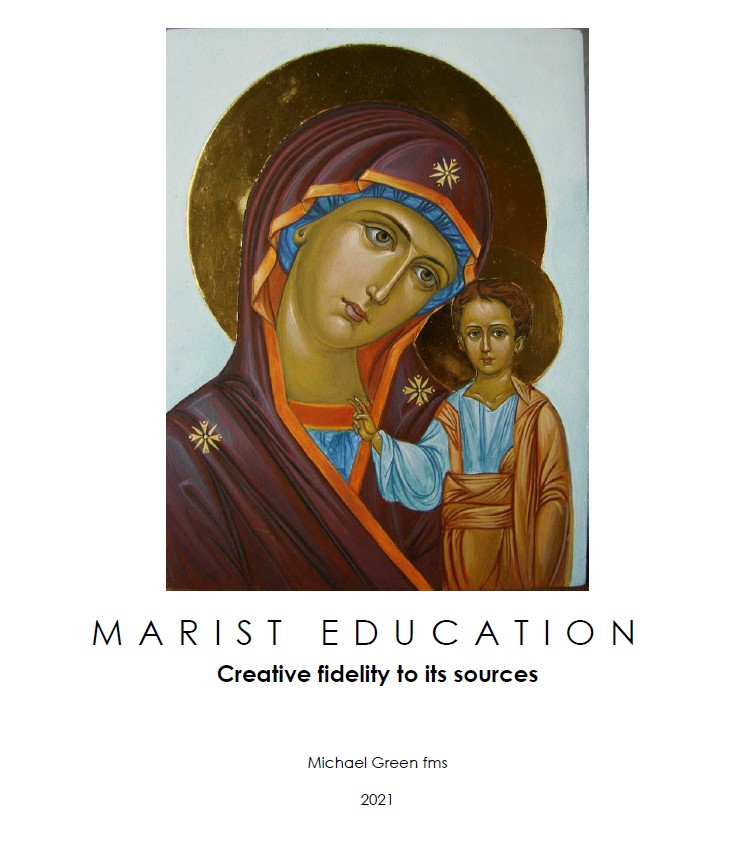Marist Education: Creative fidelity to its sources – Br. Michael Green
Download PDF – Marist Education – Br. Michael Green – 2021
Br. Michael Green wrote a series of articles on Marist education. It is a companion work to the book on Marist spirituality which he wrote in 2020.
Contents
- Introduction: We need to talk about Marist education
- Chapter 1: Marist education: for whom?
- Chapter 2: Marist education: why?
- Chapter 3: Marist education: what should be taught?
- Chapter 4: Marist education: how is it done
- Chapter 5: Marist education: by whom?
Introduction
We need to talk about ‘Marist education’
In the agreements of yesteryear between the Superior General of the Marist Brothers and local ecclesiastical authorities, drawn up when the Brothers had been invited a establish a new school in a particular diocese or parish, or where they were taking over an existing one, there were two frequently included provisions that typically ran something like this: the Brothers would be ‘at liberty to use their own methods and textbooks’, and the ‘Brother Provincial would appoint and transfer’ the staff. Most of the other clauses were usually concerned with money and property. But let us put that aside, and we can leave for later consideration the clause about the appointment of staff (which is arguably the more important) and turn our attention first to the curious phrase ‘their own methods and textbooks’. What did that mean? Clearly, it inferred that the Brothers believed that they used a pedagogical methodology – an educational approach, if you will – that was distinctively Marist, the formalised guarantee of which they regarded as essential. Even as important as the money and property! Was this a valid view, or just some insular or circular view of who they were? And if it did have validity, of what did this distinctive way of Catholic education consist?
Australian Marist students of a certain generation (such as this ageing scribe) would remember using Marist primary school textbooks in English, Arithmetic, Social Studies, and Religion of course. Even literature apparently called for a Marist approach: my Year 5 poetry text was entitled Poems Grave and Gay. An Anthology for Students of Marist Brothers’ Primary Schools. I don’t recall what was especially either gay or grave about the selected poems. Perhaps another title may be chosen today. Or perhaps not. Later, my introduction to Shakespeare in Year 9 was through a text ‘edited for Marist Schools by Brother Gerard and Brother Ligouri’. Edited Shakespeare, indeed! Our teacher – also a Brother, but younger and given to a little iconoclasm – delighted in telling us that, apart from giving us a useful critical introduction to the play, these venerable Marist scholars had sought to protect our delicate adolescent sensibilities by editing out nasty blasphemous curses such as ‘marry’ (by Mary!), ‘sblood’ (Christ’s blood!) and ‘swounds’ (God’s wounds!). It didn’t seem that Shakespeare’s stereotyping of the Jewish character Shylock bothered them as much. Then, at the end of term, our acquired Shakepearean knowledge, along with that in all our subjects, was assessed through common exams set by Marist examination committees, with the day and time the same across all Marist schools in the State.

